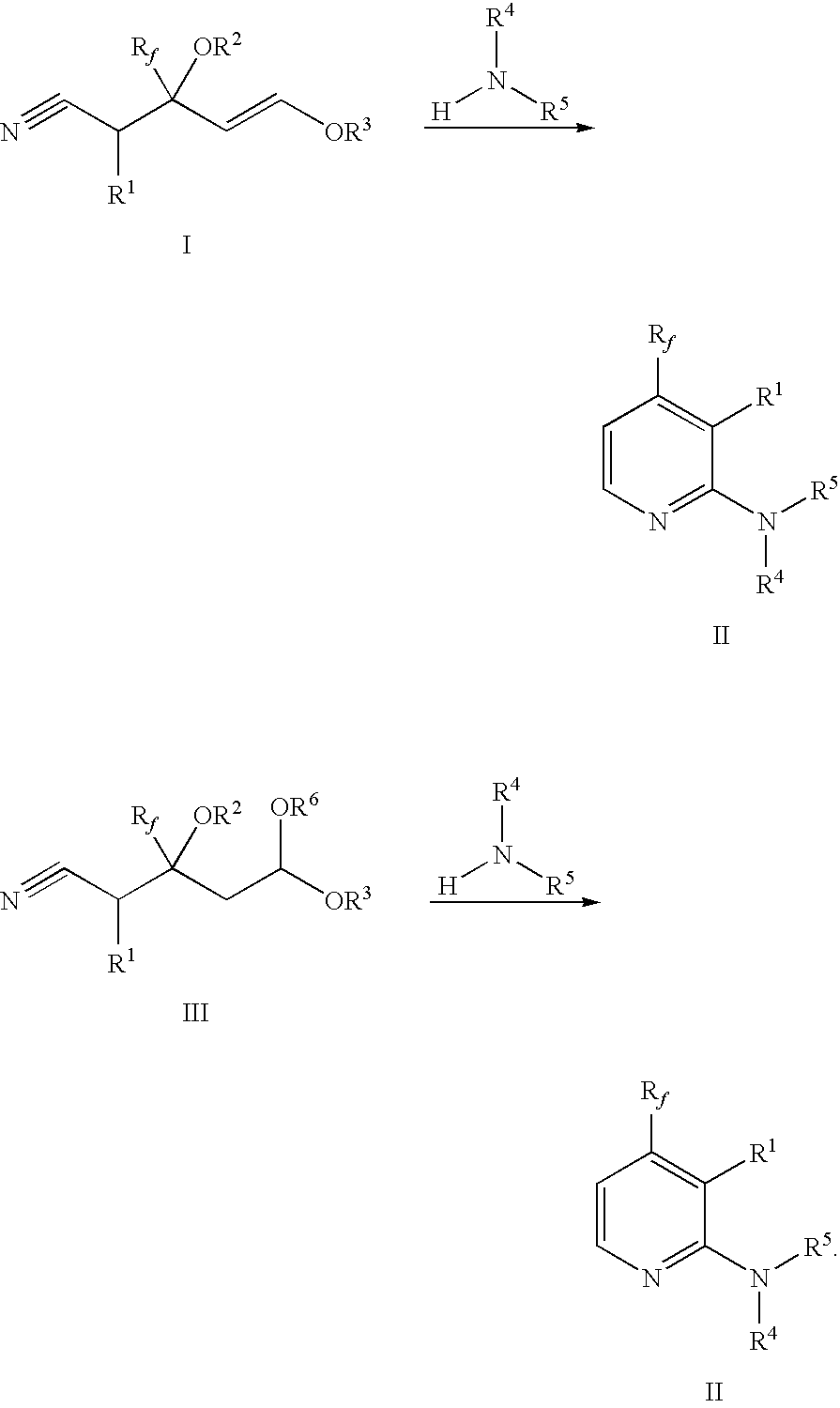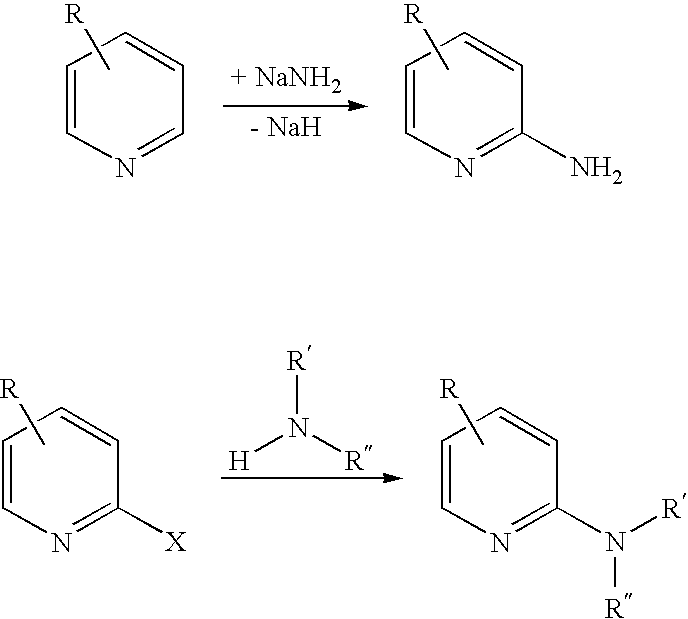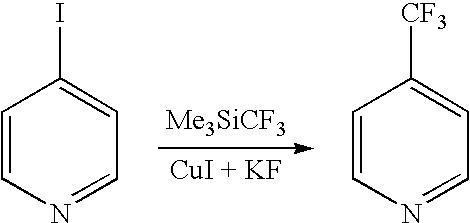Process for preparing 2-amino-4- (haloalkyl) pyridine derivatives by cyclizing suitable nitrile precursors with nitrogen compounds
a technology of cyclizing and nitrile, which is applied in the field of preparing 2amino4(haloalkyl) pyridine derivatives by cyclizing suitable nitrile precursors with nitrogen compounds, can solve the problems of difficult preparation of precursors, difficult preparation of pyridine derivatives, etc., and achieves the effect of simple preparation
- Summary
- Abstract
- Description
- Claims
- Application Information
AI Technical Summary
Problems solved by technology
Method used
Image
Examples
example 1
Preparation of 5-ethoxy-3-hydroxy-3-(trifluoromethyl)pent-4-enenitrile as the Cyclization Precursor
[0044]
[0045]500 ml of 1,2-dimethoxyethane were cooled to −72° C. and admixed at this temperature first with 126 ml of n-BuLi (2.5 molar in hexane) and then, within 2 h, likewise at −72° C., with 12.8 g of acetonitrile. The mixture was then left to stir for a further 90 min in order to complete the formation of the anion. Subsequently, at −72° C., within 2 h, the mixture was admixed with a solution of 50 g of 1,1,1-trifluorobut-3-en-2-one (preparation according to Chem, Ber. 1989, 122, 1179-1186) in 100 ml of 1,2-dimethoxyethane, and then left to stir at this temperature for 1 h. Subsequently, the mixture was warmed to 0° C. and, for neutralization, admixed with a solution of 16.1 g of sulphuric acid (96%) in 50 ml of water.
[0046]Subsequently, 500 ml of toluene were added, the phases were separated and the aqueous phase was re-extracted twice with a further 100 ml of toluene. The combi...
example 2
Preparation of 2-amino-4-(trifluoromethyl)pyridine from 5-ethoxy-3-hydroxy-3-(trifluoromethyl)pent-4-enenitrile with Aqueous Ammonia
[0047]
[0048]50 g of 5-ethoxy-3-hydroxy-3-(trifluoromethyl)pent-4-enenitrile were mixed with 600 g of aqueous ammonia (25%), and the resulting mixture was heated to 125° C. in an autoclave for 24 h, in the course of which a pressure of approx. 14 bar built up. Subsequently, the reaction mixture was cooled and the resulting biphasic mixture was extracted repeatedly with dichloromethane. The combined organic phases were cautiously concentrated by rotary evaporation, and the product was subsequently recrystallized from cyclohexane. 26.3 g of 2-amino-4-(trifluoromethyl)pyridine (68%) were thus obtained as a yellowish-brown solid. The spectroscopic data agreed with those reported in the literature (A. D. Dunn et al. in J. Fluorine Chem. 1999, 93, 153-157),
example 3
Preparation of dimethyl(4-trifluoromethylpryridin-2-yl)amine from 5-ethoxy-3-hydroxy-3-(trifluoromethyl)pent-4-enenitrile with Aqueous Dimethylamine Solution
[0049]
[0050]The procedure was analogous to Example 2, except that 600 g of aqueous dimethylamine solution (40%) were used instead of 600 g of aqueous ammonia. 28.1 g (62%) of product were thus isolated.
PUM
| Property | Measurement | Unit |
|---|---|---|
| temperatures | aaaaa | aaaaa |
| temperatures | aaaaa | aaaaa |
| temperatures | aaaaa | aaaaa |
Abstract
Description
Claims
Application Information
 Login to View More
Login to View More - R&D
- Intellectual Property
- Life Sciences
- Materials
- Tech Scout
- Unparalleled Data Quality
- Higher Quality Content
- 60% Fewer Hallucinations
Browse by: Latest US Patents, China's latest patents, Technical Efficacy Thesaurus, Application Domain, Technology Topic, Popular Technical Reports.
© 2025 PatSnap. All rights reserved.Legal|Privacy policy|Modern Slavery Act Transparency Statement|Sitemap|About US| Contact US: help@patsnap.com



